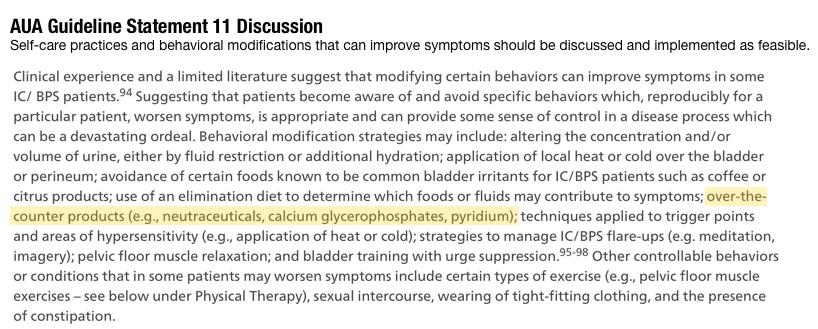We have gotten many phone calls from frantic patients diagnosed with pigmentary maculopathy due to Elmiron® use who wonder what treatment they should transition to. Researchers at the Emory Eye Center who made the original discovery of this new eye disease strongly encourage patients showing changes in their retina and vision (blurriness, difficulty in low lights, difficulty reading, wavy lines) to stop the medication to prevent further damage. Learn more!
What is pigmentary maculopathy?
Pigmentary maculopathy is a new eye disease first described by researchers at the Emory Eye Institute in 2018. It’s called “pigment” because the color of retinal cells change and the cells stop functioning normally. Multiple research studies have since been conducted by doctors around the world who have confirmed the presence of this disease in patients taking Elmiron®. They’ve also determined that the damage can progress for years even after you stop the medication.
What examinations are necessary?
The new FDA warning label for Elmiron encourages all patients starting the medication to have a baseline retinal exam with additional annual exams to monitor the health of the retina. This is not a typical eye examination. It requires specific retinal testing, including: color fundoscopic photography, ocular coherence tomography (OCT), and auto-fluorescence imaging.
Why are some urologists saying that this isn’t a “big deal.”
Unfortunately, some urologists are continuing to tell patients that the eye damage is not serious because they haven’t had any of their patients report eye disease. This is a tragic misrepresentation. Hundreds of patients are now having difficulty reading and some are now legally blind. Multiple studies now confirm the presence of the disease. The FDA has required a new warning label warning clinicians and patients of the potential risk for eye damage. The FDA would not have taken this extreme step were the research not credible and supported by additional studies. This is “a big deal” for patients who want to protect their eyesight. As I write this, many lawsuits have been filed against the manufacturers of Elmiron® with many more likely to be filed in the near future.
What should you do first?
Obviously, your case is unique and you should have a frank discussion with your doctor. For patients who have used the medication for years, this is a good opportunity to revisit your diagnosis, especially if you have not improved with Elmiron use or you aren’t as functional as you would like to be. Are you better? Are you worse?
While Elmiron® was the treatment of choice for 20+ years, we’ve learned a lot about IC since then including the now critical role of tight, dysfunctional muscles and previous pelvic injuries in triggering and perpetuating long-term IC symptoms. Fibroid tumors, endometriosis, tarlov cysts, pelvic congestion syndrome, chronic fungal infection, viral infection (and others) can also trigger the frequency, urgency, pressure and/or pain that we associate with IC. In many patients, the bladder is a victim of another dysfunction in the pelvis. Thus, these patients benefit from other therapies (such as pelvic floor physical therapy) rather than a bladder coating therapy. Learn about IC subtypes here.
Elmiron® works primarily for patients who have a damaged bladder wall (i.e. from chemical injury, estrogen atrophy etc.). If you have found Elmiron® helpful in reducing your symptoms, your first option is bladder instillations that would provide a similar coating effect (i.e. heparin, Elmiron®, lidocaine, IaAluRil®). This allows 100% of the medication to reach the bladder with less systemic absorption that could affect the eyes. But, this will require multiple visits to your urologist or you may have to be taught to do them at home.
Bladder Instillations
Elmiron® or Heparin Instillations
Ask your doctor about using heparin (or Elmiron®) lidocaine “rescue instillations.” Topical medications placed into the bladder do not distribute throughout the body at the same rate as oral medications and are generally considered safer. Self-catheterizing is an easy skill to learn so you could do this at home. Talk with your doctor to learn more about it.
IAluRil Instillations (Europe/Canada only)
IAluRil bladder instillations contain both chondroitin sulfate and sodium hyaluronate for a similar bladder coating effect. This is not approved for use in the USA.
OTC Supplements (Neutraceuticals)
Because there is no other FDA approved oral medication for IC that provides a similar effect, patients usually turn to chondroitin based supplements which are believed to have a similar coating effect. Because Elmiron has become so expensive, many patients over the years have made this transition successfully. OTC supplements have been used for 20 years now and are suggested in the American Urology Association IC/BPS guides (Step One Treatment Option – Guideline Statement 11) as well as by many of the top IC clinicians in the USA.

The American Urology Association does NOT recommend brand names. Here are some products to consider.
Which should I try?
This is a difficult question. It is impossible for anyone to predict, in advance, which one might help vs. which one you might react too. Your best best is to consider their mechanism of action and allergy warnings to see if it matches your needs. Most supplements include two key ingredients: (1) chondroitin for a bladder coating effect and (2) quercetin for an anti-histaminic & anti-inflammatory effect.
It us not unusual for some to have sensitivities to various ingredients. Please review the label carefully for any known allergens. We suggest starting small. Try one capsule and see how your body handles it. If you feel good, try one a day for a week and again assess. If you are doing well, you can gradually increase to the manufacturers recommended dosages. Of course, if you struggle with any side effects, stop the supplement and talk with your physician.
Here are some products to consider:
BLADDER BUILDER® is the most comprehensive formula available providing a coating effect. It also includes several other ingredients that might be helpful: collagen (for the bladder wall), probiotics and PEA for a pain reduction effect. If you flare while taking acidophilus, then you should pass on this. (Made in the USA with no ingredients from China)
BLADDER REST® is a simpler formulation designed for patients who struggle with sensitivity, wanting a very simple, clean formula. Again, it is based on chondroitin and quercetin. (Made in the USA with no ingredients from China)
CystoProtek® has been available for almost 20 years and is an older, beloved formula. You cannot take this if you are sensitive to shellfish or fish. It also uses a pork gelatin capsule.
Cysto Renew® combines chondroitin and quercetin with the soothing effect of Aloe and Lemon Balm (not citrus). Aloe supplements are well known to trigger gut distress in a small but significant group of patients who are sensitive.
ALOEPATH® uses organic, anthroquinone free aloe for its soothing and pain reducing effect combined with PEA for pain relief. If you tolerate aloe well, this supplement offers a greater soothing effect through the addition of PEA to the formula. If you are aloe intolerant, you should not use this product. (Made in the USA with no ingredients from China)
PEAORA® contains no bladder coating effects and is generally used who are struggling with chronic and/or nerve driven pain, such as pudendal neuralgia or central sensitization. It is similar to the formula used in the European PEA IC study. The IC study (and most other PEA studies) reported no side effects. (Made in the USA with no ingredients from China)







